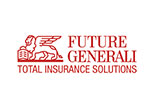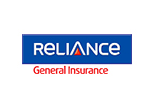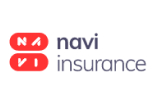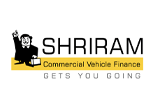How to Calculate Standalone Own-Damage Car Insurance Policy Premium
Before purchasing an own-damage car insurance plan go through the details of how the premium for own-damage car insurance cover is calculated.
Nowadays, owning a car is not just a matter of status symbol, but it has also become a necessity. However, like the car in daily lives, car insurance is also a necessity for every car owner. Third-party car insurance is a compulsory policy to be owned by every car owner in India, the cost of which is decided by the Insurance Regulatory and Development Authority of India (IRDAI) and is the same across all the insurers. On the other hand, a standalone own-damage and comprehensive car insurance cover act as a financial safeguard against unexpected accidents and minor mishaps on the road, the premium of which is determined on various factors. Let’s discuss how the premium for own-damage car insurance cover is calculated.
How the Premium for Own-Damage Car Insurance Policy Is Calculated?
The amount of premium for a standalone own-damage car insurance policy can easily be calculated with the below-given formula:
Premium Cost = Standalone Own-Damage Premium – (No Claim Bonus (NCB) + Discounts Applicable) + Premium Cost of Add-on Covers
In the case of a comprehensive car insurance policy, the Third Party Insurance Premium as fixed by the IRDAI is also added in the above formula. However, there are many factors that affect the car insurance premium amount, let’s go through the affecting factors as well to understand the calculator of premium for own-damage cover in a simpler manner.
Factors Affecting the Car Insurance Premium
Here are some vital components which impact the premium of a standalone own-damage car insurance policy:
Insured Declared Value (IDV)
The Insurance Declared Value or IDV of a car denotes its present market value. It is also the maximum amount that an insurance company is liable to pay to the policyholder as a claim for any damage or loss incurred by the car due to an accident or mishap. This is one of the most important factors which influence the premium to a large extent.
Insured Declared Value (IDV) = Car’s ex-showroom cost + Accessories cost (if any) – Depreciation as per IRDAI, based on its age.
Make and Model
The make and model of a car impact the premium cost a lot as it ascertains the value of the car. High-end cars like Audi, BMW etc., are generally insured at a higher premium in comparison to economical cars such as Alto, Wagon R, etc. Likewise, SUV cars are charged with higher insurance premiums when compared to hatchback cars.
Fuel Type
A CNG fitted car will be charged with a higher amount of premium than petrol and diesel car models. In addition to this, the premium of a diesel car will be costlier than a petrol car. Even a diesel car’s premium could be more expensive than that of a petrol car of the same car model as the cost of insurance premium is directly proportional to the car’s cost.
Manufacturing Year
The age of the car will lessen its IDV value due to the application of depreciation on it. This will also lead to a lower amount of car insurance premium as well.
Age of Car Owner
People below the age of 25 years are considered to be rash drivers or less responsible ones. Therefore, Car insurance companies provide car insurance at a higher amount of premium for people who are between 18 years and 25 years.
Geographical location
The car insurance premium amount is affected by the location of the car as well. In cities that have more traffic or where the cases of thefts and robberies are more, then to get insurance for a car registered in such cities will have to pay for a higher premium.
Accessories
Car accessories that are either electrical or electronic such as Stereo, CNG units, etc., and fitted in the car from outside the company will not be included in the selling price of the car. If they get insured, then the car owner will have to pay an additional premium for that.
No Claim Bonus (NCB)
No Claim Bonus is a reward for policyholders from the insurance company for not making any claim in the previous year. If you hold an NCB component, it can help you save up to 50% on the standalone own-damage (OD) premium. The following table explains how the NCB is calculated:
|
No. of Claim Free Years |
No Claim Bonus in Percentage |
|
1 year |
20% |
|
2 years |
25% |
|
3 years |
35% |
|
4 years |
45% |
|
5 years |
50% |
Discounts
Some additional discounts provided under own-damage plan include anti-theft device installation approved by ARAI, a membership in the Automobile Association of India (AAI), etc. If you own such discounts, you can avail of the car insurance plan by paying a lesser amount of premium.
What to Look for When Purchasing Standalone Own-Damage Car Insurance?
The following are the things to check before purchasing standalone own-damage car insurance:
- Compare Policies: If you purchase your car insurance policy online you can compare the different insurance providers, the policies they offer and their network of cashless garages before you select one.
- Read Terms and Conditions: The fine print of the insurance policy is contained in the terms and conditions of the policy. Make sure to read these carefully and check the important details before purchasing. They can make a significant difference in a time of crisis.
- Check Insurance Provider’s Reputation: We file for insurance claims in times of crisis. Hence, it can be extremely frustrating to deal with inefficient service during such times. Make sure to check the insurance provider’s reputation for such services when buying insurance. Customer reviews and claim settlement rates are a good sign of which insurance provider will be a good option.
- Add-on Covers: These optional covers can make a significant difference to your insurance’s coverage and claim amount in case of a mishap. Make sure to select them wisely.
- Network Garages: Make sure the insurance provider you have selected has a large network of cashless garages they make the claim procedure much simpler. Moreover, make sure to check that the network is especially well connected in your location and those you travel to often.
Conclusion
Before making a purchase of a standalone own-damage car insurance policy, you should look through these vital factors as they impact the premium of an own-damage car insurance policy. You should declare the right and accurate information regarding these factors during the policy purchase to get an accurate premium calculation.
Also, Read
How to Upgrade to a Comprehensive Car Insurance Policy?
Which Is Better Policy - Third Party or Comprehensive Car Insurance?














































